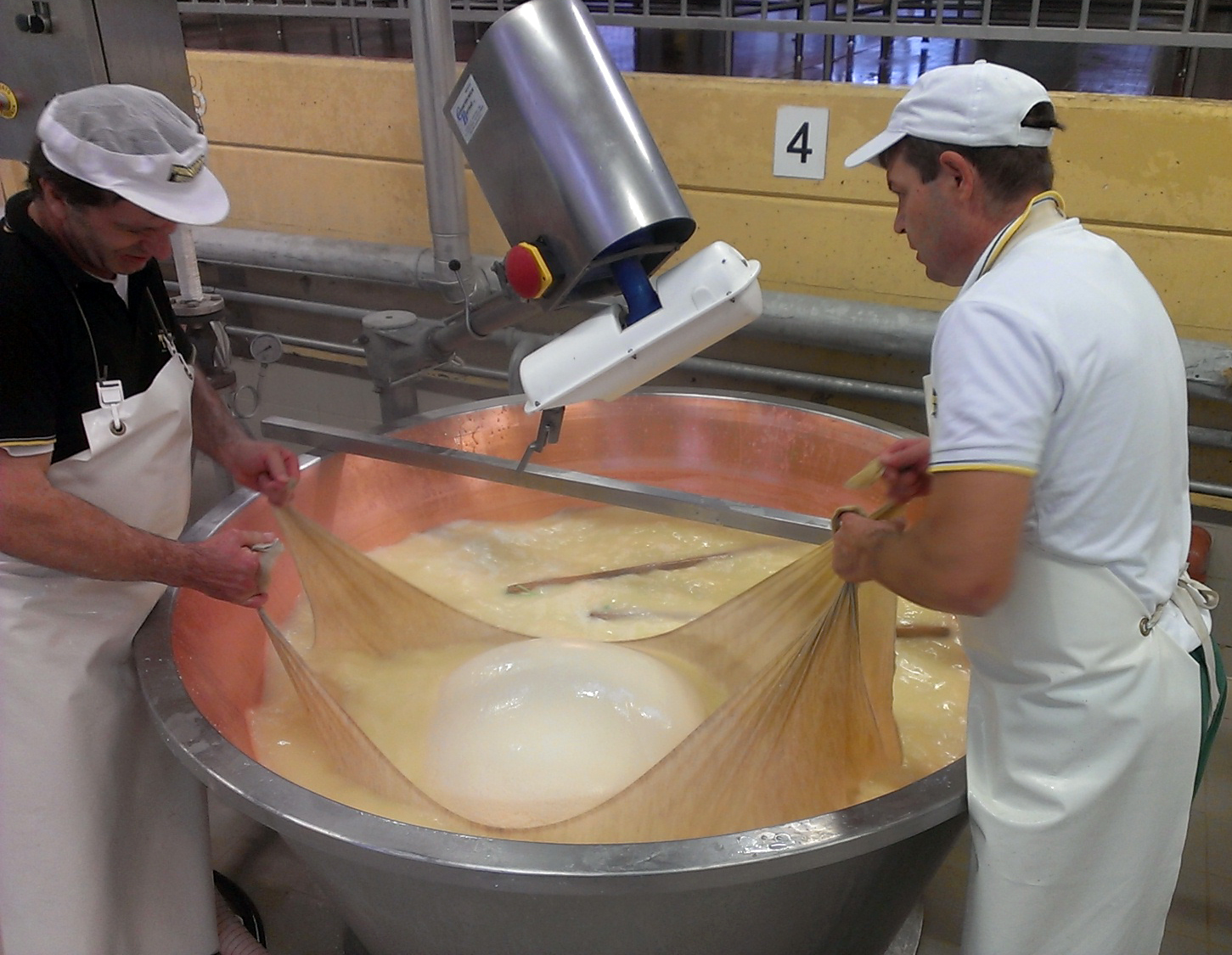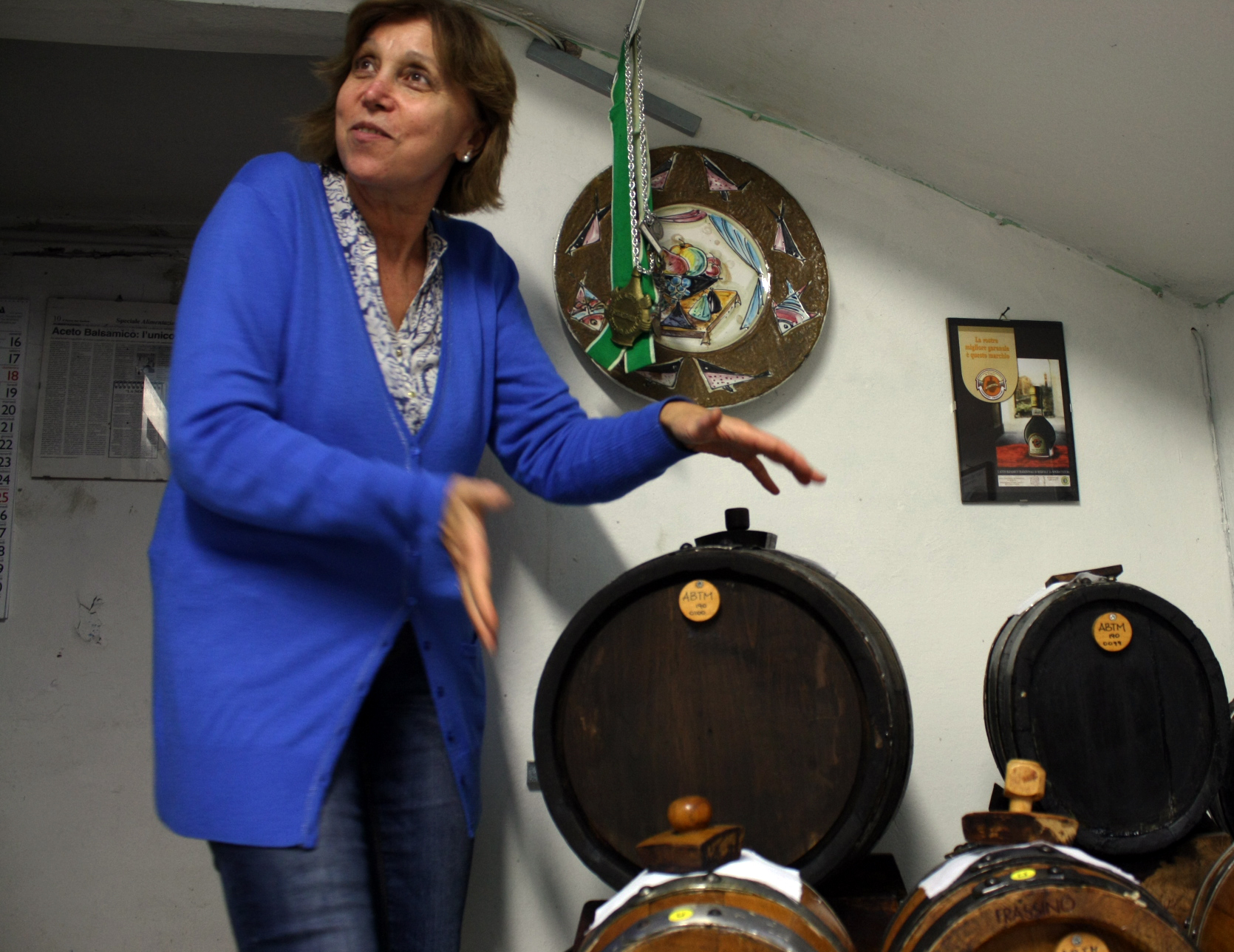By Caroline Cloutier
I recently got the chance to go to Italy for a press trip, in the region of Emilia Romagna. Of course when most people think Italy, they think food: pasta, pizza, gelato and so on. But for us Slow Food-ers, Italy is also the heart of everything Slow Food. Even if I knew it all started from there, I could not imagine how strong Slow Food was over there. I couldn’t even count the number of times I spotted the logo in food stores and markets, and even on restaurant menus.
Apart from the logo, the Slow Food philosophy is simply incredibly present in everything. From the farms to the markets to the shops, from the production to the plate, I noticed two very important things: the quality and freshness of the products, and the emphasis they put on buying local.
A good example for this is the production shop of the real Parmigiano Reggiano, located in the suburbs of the city of Parma. The milk used comes from one of the 380 farms of the region, most of them in the territory of Parma. The process of the cheese-making is impressive and rigorously controlled. Made from partly skimmed milk from the evening before and whole milk from the morning, fermented whey and grana, the mixture curds in a matter of minutes and in less than an hour, the blocks of cheese are formed and ready to be put into shape in wooden molds. As in every shop, there are losses when making the final product. But here, nothing is left unused: the extra whey is given to the pigs – you know, “Parma ham”? – and the extra cream is sold to make butter. Now that’s fresh, local, clean and sustainable!
Talking about local, you can’t get more local than when it comes to Balsamic Vinegar. You probably have heard the name of the city of Modena – that’s where it all started. Of course nowadays you can get industrial balsamic vinegar from anywhere, but the real “Aceto balsamico tradizionale di Modena” is something else. It can only be made in Modena because of its very specific weather: a cold winter and a hot summer, with a high humidity. Not only do you have to use the grapes for this region, but all the fermentation must be done there, in an attic with no isolation so that the humidity can get through the barrels. It is the quintessence of “slow” food: it has to age for at least 12 years – the highest quality has to age for at least 25.
So next time you want to taste real Italian Slow Food, cut yourself a chunk of parmegiano reggiano with your fingers, pour two or three drops of aceto balsamico tradizionale di Modena on top, and slowly let it melt in your mouth. Welcome to heaven.
***
Par Caroline Cloutier
J’ai récemment eu la chance de visiter la région d’Émilie-Romagne, en Italie, lors d’un voyage de presse. Évidemment, la majorité des gens associent l’Italie à sa cuisine : pâtes, pizza, gelato, nommez-les. Mais pour la communauté Slow Food, l’Italie est le berceau de la philosophie à laquelle nous adhérons. Même si je savais que le mouvement Slow Food y tirait ses origines, je ne pouvais pas m’imaginer à quel point il y était vraiment vivant et puissant. Je n’ai pas réussi à tenir le compte de toutes les fois où j’ai vu son logo, dans les magasins, dans les marchés, et même sur les menus de restaurants.
Outre le logo, la philosophie est elle aussi incroyablement présente partout où l’on passe. Des fermes aux marchés en passant par les boutiques, de la production à l’assiette, j’y ai remarqué deux grandes tendances : la qualité et la fraîcheur des produits, et l’accent mis sur l’achat de produits locaux.
L’usine de production du vrai Parmigiano Reggiano, située en banlieue de la ville de Parme, en est un exemple frappant. Le lait utilisé pour la fabrication du fromage provient de l’une des 380 fermes de la région, la majorité du territoire de Parme. C’est un processus impressionnant et rigoureux. Fait de lait écrémé de la veille et de lait entier du matin, fermenté avec du petit lait et des cultures, le mélange caille en quelques minutes et en moins d’une heure, des blocs de fromage se sont formés et sont prêts à être transférés dans des moules ronds en bois. Comme dans toute usine, il y a des pertes tout au long de la production, mais ici, rien n’est laissé au hasard. Les surplus de petit lait sont donnés aux cochons, ceux qui feront le jambon de Parme, et le surplus de crème sera vendu pour être transformé en beurre. Ça, c’est frais, local, propre et durable!
À propos des produits locaux, il n’y a rien qui arrive à la cheville du vinaigre balsamique. Vous avez probablement entendu parler de la ville de Modène; c’est là que tout a commencé. Bien entendu, de nos jours, on peut trouver du vinaigre balsamique industriel partout, mais le vrai « Vinaigre balsamique traditionnel de Modène » est une classe à part. Il ne peut être produit qu’à Modène en raison de son climat très particulier : un hiver froid, un été chaud et un haut taux d’humidité sont nécessaires. De plus, non seulement on doit travailler avec des cépages bien précis poussant dans la région, mais la fermentation doit être faite sur place, dans un grenier non isolé afin de permettre à l’humidité de pénétrer dans les barils. C’est la quintessence de la « slow food » : le vinaigre doit vieillir au minimum 12 ans, et 25 ans dans le cas du produit le plus haut de gamme.
Alors la prochaine fois que vous voudrez goûter à la vraie « Slow Food » à l’italienne, prenez un morceau de parmigiano reggiano avec vos doigts, déposez-y deux ou trois gouttes de vinaigre balsamique traditionnel de Modèle, et laissez doucement fondre dans votre bouche. Bienvenue au paradis.

